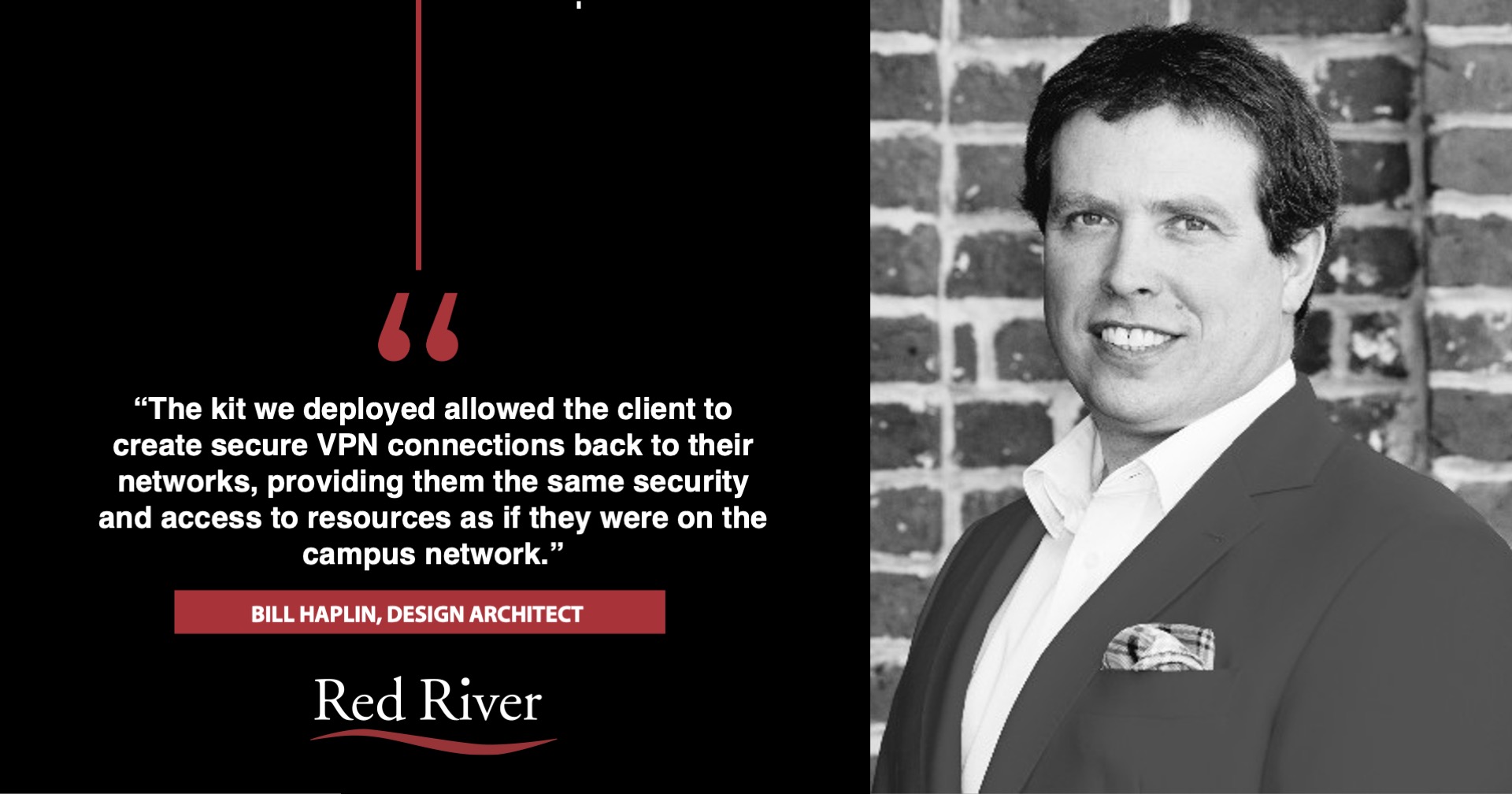
Working Remotely with Wireless LAN: Navigating Post-pandemic Changes
Following the wake of the COVID-19 pandemic, many businesses took the opportunity to refocus their efforts on implementing and maintaining a strong network. Navigating network connectivity post-pandemic was proving difficult for most organizations, as they struggled to transition to a remote or hybrid workforce.
In working with a recent client on improving their communications and network systems, Red River was able to effectively support the organization’s staff for COVID-19 testing and subsequent vaccine distribution by providing a scalable solution that enables the use of high-end technology for improved network connectivity with users on-premises and accessing remote.
To allow network users at home or away from the office to work remote, a wireless Local Area Network (WLAN) is used to give users the ability to move around within an area and remain connected to the network. The users that are connected to this WLAN are part of a wireless computer network that links devices using wireless communication, forming a local network within a limited area such as a home, school, laboratory, campus, or office building.
According to Bill Halpin, Design Architect at Red River, some organizations are starting to take a closer look at their WLANs to make sure they support modern end-to-end communication like video conferencing, as well as specific tasks like COVID-19 contract tracing and temperature monitoring.
“In assessing the problem, we examined the client’s current WLAN infrastructure and provided recommendations on possible actions to take, such as the redesigning and deployment of a WLAN to meet new requirements,” Halpin said.
Halpin and his team came up with several solutions to resolve the client’s issue with remote connectivity, employing the use of a deployable Mobile WLAN kit to allow the client to connect to a 4G LTE or 5G cellular service and create secure VPN connections back to corporate networks from virtually any location.
“The kit we deployed allowed the client to create secure VPN connections back to their networks, providing them the same security and access to resources as if they were on the campus network,” Halpin commented.
In addition to the Mobile WLAN kit, Red River also implemented solutions using the Citizens Broadband Radio Service (CBRS) or Private LTE (pLTE) networks – including Red River’s “Access Wellbeing” and “Access-EDU” – to resolve the client’s problems. While Access Wellbeing is primarily used for asset tracking and capacity management, Access-EDU allows clients to build their own pLTE networks and allow their users to connect remotely with enhanced security measures taken across all vertical markets.
“Our solutions can provide a facility with contact tracing, asset tracking, symptom screening, body temperature checks, visitor management, capacity management, control access as well as social distancing monitoring. With our Access solutions, companies can plan for a smooth reopening of their facilities while ensuring the health and safety of employees.”
Red River’s range of short- and long-term solutions allows clients the flexibility to fix any quick issues and budget for a new WLAN with faster speeds and increased capacity. Once a WLAN solution is in place, Red River helps the client to upgrade to faster technologies as they become available, providing them with the ability to improve connectivity and make organizational communication more effective.
For more information on what Red River’s solutions can do for your organization, visit redriver.com or contact [email protected]

written by
Red River
We call ourselves a technology transformation company because we know how to harness the power of technology to change the way you do business and meet mission objectives. Our industry leading technical expertise, strategic partnerships and portfolio of services and solutions that span the entire lifecycle of technology have made us the partner of choice for clients in the commercial, federal and SLED markets interested in optimizing business processes and maximizing the value of their investments. Learn more about Red River.




